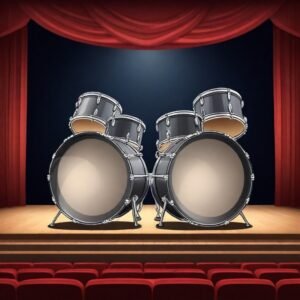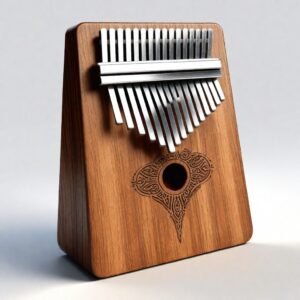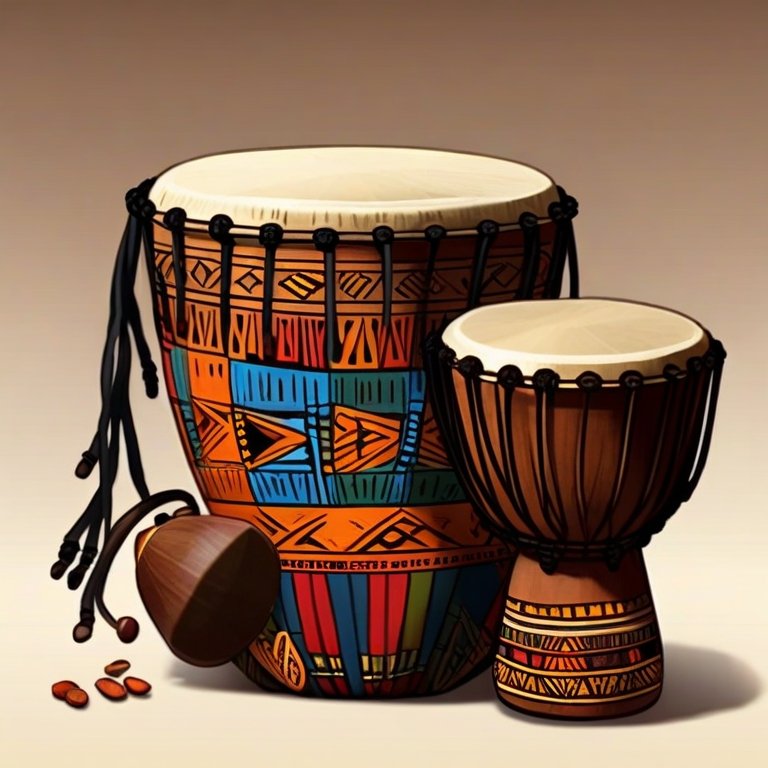Introduction to Bass Instruments
Bass instruments hold an extreme importance in music, providing the fundamental depth and rhythm that support compositions across various class. Whether it’s the sonorous hum of a double bass or the thunderous echoing of a tuba, these instruments play an important role in shaping musical transcription.
From the vibrant depths of the double bass to the electrifying pulse of the bass guitar, these instruments not only provide the bedrock of rhythm and harmony but also carry the soulful essence of melodious music across generations.
In this article we will gain knowledge about the captivating world of bass instruments, exploring their evolution, significance, and long-lasting legacy. Whether you’re a seasoned musician, an avid bass lover, or simply curious about the melodic wonders of the bass, this list of 100 bass instrument will bring you closer to music and its rich heritage.
What is a BASS?
Understanding BASS in a laymen’s language:
Let’s understand this with an example from a piece of theme music in the movie, THE MISSION IMOSSIBLE. In its theme song, the bass is that part which provide a strong throbbing foundation. Its like the heartbeat of the music, keeping everything dense adding excitement and a mysterious joy.
Imaging you are standing near a speaker and when the bass kicks in you can feel the gentle thud or rumble that brings vibrations in your body. That sound which adds density is nothing but the bass in the song. Think of the word, “Zoom” or “boom” to get an idea of the sound of bass.
Historical Overview of Bass Instruments
Ancient Origin
The origin of bass instruments is found in ancient civilizations of Mohenjo Daro, Mesopotamia, Egypt and China. In these early civilisations, musician made simple string instruments like harp and lyre where bass strings were the main feature. These instruments were part of religious ceremonies, festival, parties and social gatherings providing the basis for more strong bass sound in the evolution of bass instruments.
Bowed string instrument,” Viola Da Gamba”, from the Medieval Europe culture was popular in Renaissance and Baroque Music ( heavily ornamented style of music ). This instrument is deep and rich in its musical texture and added a important role in early smaller ensembles and orchestras.
The 16th century witnessed the versatile sound in the form of double bass in Western Music. Till and then and now, double bass remains a keystone of classical, jazz and folk music. In the 20 th century genres like funk, reggae and rock and roll revolutionised by the invention of the electric bass guitar. The bass guitar offered a more portable and amplified method to the double bass resulting in the rhythmic groove in this era.
The list of instruments below will provide a clear understanding of what type of instrument is bass? and the bass proportion held by each instrument. Music without bass is like a body without breath. While there are some sounds that may be enjoyable to listen to without bass, the presence of bass in a musical score adds meaning and purpose to the song.

List of 60 bass instruments from around the world:
- Double Bass (Upright Bass): By the 16th century, the double bass is the largest member of the string instrument family. It is still contributing in the genres of classical, jazz, and folk music.
- Bass Guitar: Developed in the 1930s, the bass guitar is a famous electric instrument with a longer neck and thicker strings than a regular guitar. It’s a basic component of many genres, including rock, funk, and blues.
- Electric Upright Bass: A modern version of the double bass, the electric upright bass also known as acoustic bass uses pickups to amplify sound, making it suitable for intensify performances in various genres.
- Fretless Bass Guitar: Similar to a regular bass guitar but without frets to space the strings, allowing for smoother flowing and change in the pitching techniques. It’s commonly used in fusion, jazz and world music.
- Contrabass Balalaika: A Russian string instrument with a triangular body and three strings, traditionally played with a piece of plastic, metal etc. It’s used in Russian folk music and orchestras.
- Acoustic Bass Guitar: A bass guitar designed to be played without a boost, often used in unplugged form of music.
- Guembri (Sintir): Used by Gnawa musicians in Morocco, Guembri is played with the fingers and serves as both a bass and rhythm instrument with three strings and a long neck.
- Shamisen: A Japanese three-stringed instrument with a long neck and rectangular body, played with a plectrum. It’s used in traditional Japanese music and theater.
- Electric Bass Ukulele: A small, four-stringed instrument similar to a ukulele but plugged into an amplifier. It is popular for its portability and sound projection.
- Chapman Stick: Invented in the 1970s, the Chapman Stick is a multi-stringed instrument played by tapping the strings with both hands. It can produce bass, melody, and chordal accompaniment simultaneously like a piano or on a guitar.
- G’ijak: A traditional bowed string instrument from Tajikistan, used in Central Asian music ensembles.
- Kemenche: Used in Turkish classical music until the late 18th century, Kemenche has instrument pear-shaped body and three strings, played in folk and classical music.
- Horsehead Fiddle: A Mongolian bowed instrument also known as Morin Khuur with a peculiar horsehead-shaped scroll, used in traditional Mongolian music.
- Indian Sarangi: A bowed-stringed instrument with a rectangular body and three main playing strings, used in Hindustani classical music.
- Viola da Gamba: A bowed-string instrument popular in the Baroque and Renaissance periods, similar to a larger, more elongated violin.
- Cello: Similar in appearance to the double bass but smaller, the cello is a bowed string instrument with a rich, basso sound. It’s a notable member of classical orchestras and chamber ensembles.
- Octobass: An extremely large and rare bowed string instrument, designed to produce the lowest pitches possible. It’s an eccentric in orchestras due to its immense size and limited repository.
- Electric Double Bass: A modern version of the double bass plugged in sockets designed for amplified performances in contemporary music genres.
- Bass Banjo: A four stringed instrument produced separately by Gibson in the 30s. This was a variant of the banjo with a larger body and deeper tone, often used in bluegrass and folk music.
- Bass Violin: An alternative term for the double bass, especially in orchestral contexts.
- Bass Flute: A larger version of the flute with a lower modulation, used in orchestras and flute ensembles for its rich, loud tone.
- Bass Saxophone: A large, low-modulated saxophone used primarily in jazz and marching bands for its dynamic sound.
- Bass Clarinet: A clarinet with a longer body and lower pitch than the standard clarinet, commonly used in concert bands and orchestras.
- Bass Trombone: Another form of the trombone with additional tubing to produce warm and rich sound often used in brass bands and orchestras.
- Bass Oboe (Oboe d’amore): Double reed instrument of the woodwind family. An oboe with a lower pitch than the standard oboe, used primarily in orchestral and chamber music.
- Bassoon: A double-reed woodwind instrument with a deep, rich tone produces low notes.
27 Double Bassoon: Also known as Contrabassoon, is a larger and sounding an octive lower version known for its distinctive and resonant sound.
- Sousaphone: A marching tuba devised to be worn around the body, with the bell pointing forth. It’s regularly used by marching bands and traditional jazz bands.
- Bass Trumpet: A trumpet with additional tubing to produce lower pitches, used in brass bands and orchestras for its rich, euphonious sound.
- Tuba: The largest and gentle member of the brass instrument background, commonly used in orchestras, brass bands, and military bands for its potent bass notes.

31.Bass Harmonica: A large melodious harmonica with low-modulation reeds, used in jazz and folk music for its deep, eloquent tone.
- Helicon: A type of tuba with a circle shape, similar to the sousaphone, often used in military bands and brass ensembles.
- Bass Hulusi: A Chinese harmonica with multiple bamboo pipes, competent of producing deep, resonant tones. It’s used in conventional Chinese music for its expressive, musical prowess.
- Bass Dizi: A Chinese cross-sectional flute with a deeper tone than the typical dizi, used in historic Chinese music for its rich, vibrant sound.
- Bass Drum: A large drum with a low-pitched sound, typically played with a wooden head hammer or beater in orchestras, rock bands and marching bands/
- Bass Synthesizer: An electronic keyboard capable of producing low-frequency sounds similar to those of conventional bass instruments, used in electronic music creation and live shows.
- Bass Sampler: A digital music instrument that normally plays back bass sounds.
- Bass Pedals: A manually operated pedals used to manage the pitch and volume of bass instruments, commonly used by musician in jazz, rock and modern music.
- Bass Drum Pedal: A foot operated mechanism that allows drummers to play the bass drum, normally used in drum kits for added control and variations.
- Bass Cajon: A percussion instrument almost identical to a conventional cajon but designed to produce deeper, bassier tones. It’s regularly used in acoustic music settings.
- Bass Synth Pedal: A stompbox effect pedal that generates consolidate bass sounds from an electric guitar or other instrument, allowing for creative sound exploit and trials.
- Bass Whistle: A low-alto whistle or flute used in conventional Irish and Scottish music for its haunting, gloomy sound.
- Bass Recorder: A large recorder with a low-alto sound, used in early music ensembles and recorder consorts for its warm, resonant tone.
- Bass Congas: A set of conga drums tuned to lower pitches, used in Latin music ensembles for their deep, rhythmic sound.
- Bass Djembe: A larger version of the African djembe drum with a deeper tone, used in West African music for its powerful bass sound.
- Bass Kalimba (Mbira): A thumb piano traditionally from Zimbabwe with longer, thicker tines adjust to low pitches, used in African music for its melodic and rhythmic abilities.
- Bass Marimba: A variation of the marimba with longer re-echo and larger keys adjust to lower pitches, used in percussion for its deep sound.
- Bass Steel Pan: A steel drum with larger, lower-alto notes, used in steel bands for its pulsating and melodic abilities.
- Bass Taiko Drum: A large Japanese cylindrical drum with a deep, booming sound, used in traditional taiko drumming for its high-powered bass tones.
- Bass Sitar: A variation of the sitar with a larger body and longer strings typically used in Hindustani Classical Music tuned to lower pitches, for its rich, resonant sound.
51 Bass Mbira: Also called as Kalimba with longer, thicker tines tuned to low pitches, used in African music for its deep, sonorous tones.
- Bass Xylophone: A variation of the glockenspiel with longer, thicker bars tuned to subsonic, used in orchestras and percussion troupe for its rich, sonorous sound.
- Bass Harp: A large, bass harp with elongated strings tuned to lower pitches, used in symphony and small ensemble music for its deep, sonorous tones.
- Bass Sheng: A Chinese mouth organ with bamboo pipes and a calabash wind chamber, capable of producing low frequency sound.
- Bass Pipa: A Chinese lute with a pear-shaped physique and four strings, tuned to lower pitches than the conventional pipa. It’s used in time-honoured Chinese music for its deep, reverberating sound.
- Bass Erhu: A Chinese stringed instrument with a long neck and two strings, tuned to lower pitches than the conventional erhu. It’s used in Historic Chinese music for its deep, emotive tone.
- Bass Guzheng: A Chinese auto harp with longer, thicker strings tuned to lower pitches, used in traditional Chinese music for its rich, reverberating tones.
- Bass Dan Bau: A Vietnamese trichord instrument with a single string, capable of producing deep, bassy tones. It’s used in historic Vietnamese music for its eerie, wistful melody.
- Bass Koto: A Japanese zither with elongated, lower-pitched stringed, used in traditional Japanese music for its deep bass resonance.
- Bass Kokyu: A Japanese string instrument with an extended neck and three strings, tuned to lower pitches than the typical kokyu. It’s used in conventional Japanese music for its rich, echoing tones.


